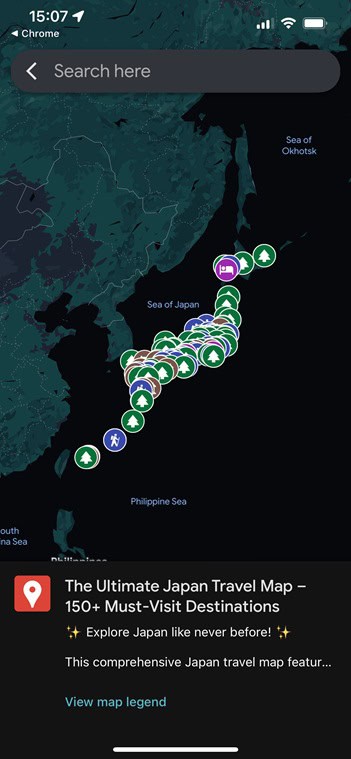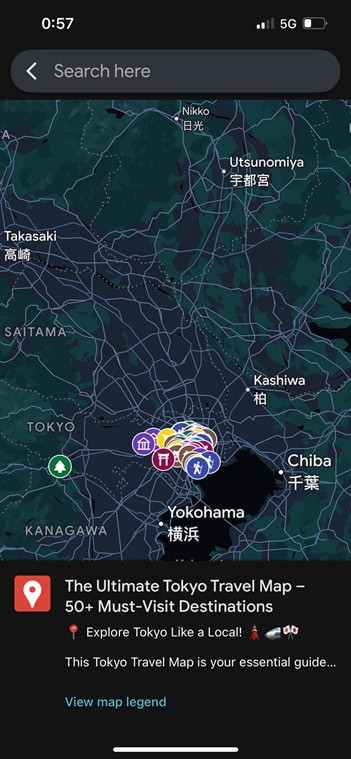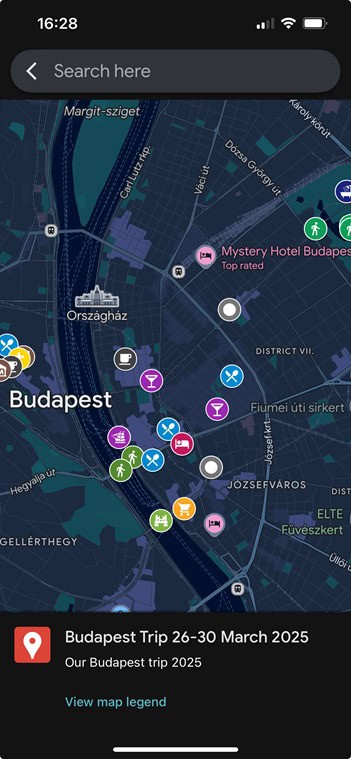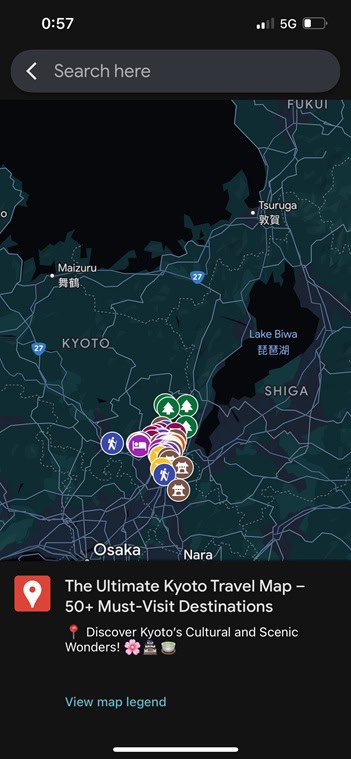Introduction
Japan is one of the few countries where each season feels like a distinct chapter in a storybook—spring’s cherry blossoms flutter like confetti, summer pulses with vibrant festivals, autumn paints the country in fiery reds and golds, and winter wraps everything in snow-dusted serenity.
Whether you’re a family planning a school break adventure or a cultural explorer chasing deeper, more meaningful travel moments, timing your trip around Japan’s seasons can completely transform the way you experience the country.
In this guide, we’ll walk you through the best seasonal experiences Japan has to offer—where to go, what to see, and what to expect from the weather, the festivals, and the local vibe. You’ll also find real-world tips to help you travel smoothly, confidently, and with more joy (and less stress).
Let’s dive into the magic of Japan, one season at a time. 🌸☀️🍁❄️
Get Your FREE London Travel Map + 5 Must-Have Travel Resources!
Plan smarter, stress less, and make every trip unforgettable with these exclusive tools—100% FREE!
📩 Sign up now & download instantly!

Best Time to Visit Japan (Quick Guide)
Japan is a year‑round destination, but the “best” time depends on what you want: cherry blossoms and gentle weather in spring, festival energy and beaches in summer, fiery foliage in autumn, and powder snow plus cozy onsens in winter. Use the table below to match the season to your travel style, budget, and crowd tolerance.
| Season | Weather Snapshot* | Crowds | Typical Costs | Family‑Friendly | What It’s Best For |
|---|---|---|---|---|---|
| Spring (Mar–May) | Mild; ~10–20 °C / 50–68 °F. Occasional rain; cooler in the north. | High during sakura (late Mar–early Apr). | $$–$$$ (peaks during blossom weeks). | Excellent for parks, light layers, easy city days. | Cherry blossoms (hanami), gardens, scenic walks, classic first‑timer trips. |
| Summer (Jun–Aug) | Warm–hot; ~22–32 °C / 72–90 °F. Rainy season early summer; humid. Cooler in Hokkaido. | High around big festivals & school holidays. | $$ (cities) – $$$ (Okinawa peak & festival cities). | Great with beach breaks; plan around heat of day. | Festivals (matsuri), fireworks, Okinawa beaches, alpine escapes, Fuji climbing season. |
| Autumn (Sep–Nov) | Comfortable; ~12–22 °C / 54–72 °F. Typhoons possible early Sep; crisp by Nov. | Medium → High at foliage peak (mid‑Nov). | $$–$$$ around peak foliage weekends. | Excellent for walks, hikes, cultural sites. | Autumn colors (koyo), temple light‑ups, food festivals, photography. |
| Winter (Dec–Feb) | Cold; ~0–10 °C / 32–50 °F (colder in the north/mountains). Dry, clear days common. | Low–Medium (spikes at New Year & major ski weeks). | $–$$ in cities; $$$ for top ski resorts. | Great with onsens, indoor attractions, snow fun. | Powder snow (Hokkaido/Nagano), illuminations, onsens, Sapporo Snow Festival. |
*Averages vary by region (Hokkaido vs. Kyushu/Okinawa). Festival dates and foliage/blossom peaks shift yearly—always reconfirm before booking.
- If you want iconic scenery: Spring blossoms or autumn foliage.
- If you want better prices & fewer crowds: Early winter (city trips) or late autumn shoulder weeks.
- If you’re visiting with kids: Plan mid‑day breaks in summer; prioritize stroller‑friendly parks in spring/autumn; look for family/private onsens in winter.
Spring in Japan 🌸 (March to May)
Why Spring Is Magical in Japan
Spring in Japan is more than just cherry blossoms—though, let’s be honest, they’re pretty iconic. It’s a time of renewal, when parks turn pink, locals gather for hanami (flower-viewing) picnics, and a soft, fresh energy lingers in the air. The weather is mild, making it ideal for sightseeing, long strolls, and outdoor festivals.
Where to Go in Spring
- Tokyo: Ueno Park and Shinjuku Gyoen are must-visits for sakura blooms. Don’t miss a boat ride under the blossom-laced trees at Chidorigafuchi near the Imperial Palace.
- Kyoto: The Philosopher’s Path is legendary for cherry blossoms lining a peaceful canal walk. Maruyama Park transforms into a festive gathering spot every spring evening.
- Hirosaki (Tohoku): Known for its castle and over 2,500 cherry trees, Hirosaki Park is a dream-like destination in late April.
- Hokkaido: Blossoms bloom later here (late April to early May), perfect if you missed peak bloom elsewhere.
Seasonal Events & Experiences
- Takayama Spring Festival: A stunning mix of ornate floats, lanterns, and traditional performances in Gifu Prefecture.
- Tea Ceremonies: Participate in a cherry blossom-themed ceremony in Kyoto or Kanazawa for a quiet moment of cultural immersion.
- Cultural Insight: In Japan, cherry blossoms are a metaphor for the fleeting nature of life—beautiful, brief, and deeply symbolic in everything from poetry to samurai philosophy.
Travel Tips for Spring
Layer up in the mornings and evenings, especially in Kyoto where temperatures can dip after sunset. A light scarf or cardigan is perfect for hanami picnics that stretch into the night. If you’re planning to visit popular cherry blossom spots like Ueno Park or Maruyama Park, arrive early to secure a good viewing spot and avoid peak crowds. Allergy sufferers should bring medication, as pollen levels can be high with so many trees in bloom.
🎟️ Ready to experience Japan’s spring magic?
From serene tea ceremonies to unforgettable hanami picnics, many of the experiences you’ve just read about can be booked in advance through trusted partners like Klook. Booking ahead helps secure your spot during peak cherry blossom season.
- Tokyo Boat Cruises: Glide under sakura-lined waterways at Chidorigafuchi or Sumida River for a unique blossom view.
- Kyoto Tea Ceremonies: Join a spring-themed ceremony in a traditional teahouse for cultural immersion.
- Takayama Spring Festival Tours: Explore ornate floats and lantern-lit streets with a knowledgeable guide.
Many major seasonal events and attractions can be booked directly via Klook. If availability is limited, check the event or venue’s official site for current schedules and ticket updates.
🌸 Where to Stay for the Perfect Japan Spring Experience
Spring in Japan is peak travel season, so securing the right stay early can make all the difference. Here are some top-rated, well-located picks for enjoying cherry blossom season in style:
✨ The Royal Park Hotel Iconic Tokyo Shiodome
📍 Tokyo – Minato
Enjoy panoramic city views and easy access to Shinjuku Gyoen and Ueno Park for hanami picnics. Excellent transport links and spacious family-friendly rooms.
Book via Expedia
✨ Hotel Granvia Kyoto
📍 Kyoto – Above Kyoto Station
Perfect for spring travelers wanting quick access to the Philosopher’s Path and Maruyama Park. On-site dining, cultural touches, and unbeatable convenience.
Check availability on Booking.com
✨ Art Hotel Hirosaki City
📍 Hirosaki – Aomori Prefecture
Just minutes from Hirosaki Park’s iconic cherry blossoms. Comfortable rooms, excellent breakfast, and perfect for late April bloom seekers.
Reserve on Trip.com
💡 Tip: Sakura season books out fast—reserve accommodations months in advance for the best rates and locations.
Summer in Japan ☀️ (June to August)
Why Summer Is Vibrant in Japan
Summer is loud, lively, and packed with energy. Think colorful yukata (summer kimonos), the thump of taiko drums at festivals, and firework displays lighting up the night sky. While the heat and humidity can be intense, there are plenty of cool escapes—from mountain retreats to breezy islands.
Where to Go in Summer
- Okinawa: Japan’s tropical paradise with crystal-clear waters, coral reefs, and laid-back island life. Perfect for families wanting a beachy break.
- Hokkaido: Escape the mainland heat in Sapporo. Visit Furano for vibrant lavender fields and go hiking in Daisetsuzan National Park.
- Kyoto: Despite the heat, Kyoto’s Gion Matsuri is one of Japan’s most important festivals and well worth braving the sun for.
- Tokyo: The city doesn’t slow down—Sumida River Fireworks Festival, rooftop beer gardens, and vibrant summer street food stalls make for unforgettable nights.
Seasonal Events & Experiences
- Gion Matsuri (Kyoto): An entire month of traditional events, elaborate floats, and cultural pageantry.
- Fireworks Festivals (Hanabi Taikai): Nearly every town and city has at least one major fireworks display—locals come dressed in yukata, creating a festive, nostalgic vibe.
- Mt. Fuji Climb: Open only from early July to early September. It’s challenging, rewarding, and often paired with a stunning sunrise.
Travel Tips for Summer
Hydrate constantly—the humidity can be intense, and even locals carry drinks from the ever-present vending machines. To make the most of summer festivals like Gion Matsuri or local fireworks displays, arrive early and dress for the heat—lightweight yukata are both breathable and festive. Consider visiting cooler destinations like Hokkaido or coastal areas such as Okinawa to balance the energy of the season with some relaxing downtime.
🎟️ Make the most of Japan’s summer: reserve ahead
You’ve just read about Gion Matsuri, fireworks nights, Okinawa’s beaches, Hokkaido’s lavender fields, and the Mt. Fuji climb. Secure spots and skip day‑of stress by booking through trusted partners like Klook.
- Kyoto’s Gion Matsuri: Look for guided walking tours or reserved viewing areas via Klook to navigate crowds comfortably.
- Fireworks (Hanabi) evenings: Snag river cruise seats or rooftop access in Tokyo and beyond—high demand, limited capacity—check Klook early.
- Mt. Fuji climbing season (July–early Sept): Reserve guided climbs, hut stays, or transport packages on Klook for safer, smoother ascents.
- Okinawa water adventures: Compare family‑friendly snorkel trips and reef cruises on Klook (life vests and beginner options widely available).
- Hokkaido (Furano & Daisetsuzan): Find lavender farm shuttles and guided day hikes via Klook—a cool escape from the mainland heat.
Many major attractions across Japan can now be booked directly through trusted platforms like Klook (and globally on Viator or GetYourGuide). If you don’t see availability, check the event or venue’s official website for the latest hours, ticket releases, or on‑site purchase options.
☀️ Where to Stay for the Perfect Japan Summer Adventure
Japan’s summer brings vibrant festivals, dazzling fireworks, and stunning seasonal landscapes. Here are top-rated stays to keep you close to the action while offering cool escapes when you need them:
✨ Halekulani Okinawa
📍 Okinawa – Onna Village
Beachfront luxury with family-friendly pools, direct beach access, and activities for all ages. Perfect for a tropical break.
Book on Expedia
✨ JR Tower Hotel Nikko Sapporo
📍 Hokkaido – Sapporo
Elegant rooms with sweeping city views, connected to JR Sapporo Station. Easy access to Furano’s lavender fields and Daisetsuzan National Park.
Check availability on Booking.com
✨ The Royal Park Hotel Kyoto Sanjo
📍 Kyoto – Central
Well-located for Gion Matsuri festivities, with comfortable rooms, excellent service, and quick transport links.
Reserve on Trip.com
💡 Tip: Festival-season stays fill up fast—book several months in advance to secure the best spots near event sites.

Autumn in Japan 🍁 (September to November)
Why Autumn Is Enchanting in Japan
If spring is soft and sweet, autumn is bold and reflective. This is the season of koyo—the fiery fall foliage that transforms Japan’s parks, mountains, and temples into a breathtaking palette of reds, oranges, and golds. The crowds of summer are gone, and the crisp air feels perfect for exploration.
Where to Go in Autumn
- Kyoto: Tofuku-ji and Eikando are particularly stunning in mid-November. Arashiyama’s mountain backdrop explodes with color.
- Nikko: The mountainous backdrop of this UNESCO World Heritage site makes for some of the best autumn viewing.
- Hakone: Onsen inns, lake cruises, and scenic trails with vivid views of Mt. Fuji under a canopy of leaves.
- Kamakura: Just an hour from Tokyo, this ancient capital offers historic temples and vibrant maple-lined trails.
Seasonal Events & Experiences
- Momiji-gari: “Hunting for red leaves” is a beloved national pastime. Popular spots often become social hubs for photographers and families.
- Jidai Matsuri (Kyoto): A historical parade in full costume, reenacting Japan’s imperial eras.
- Food Festivals: Autumn is a harvest season—look out for local celebrations featuring chestnuts, persimmons, sweet potatoes, and mushrooms.
Travel Tips for Autumn
Check regional foliage forecasts to catch the leaves at their most vibrant—Kyoto’s Tofuku-ji and Nikko’s mountain trails are especially stunning in mid to late November. Many temples and gardens extend their hours for evening light-up events, so plan to experience both day and night views. This is also one of the best seasons for hiking, with crisp air, dry trails, and fewer insects compared to summer.
🍁 Plan your perfect Japan autumn escape
From Kyoto’s temple gardens to Hakone’s lakeside views of Mt. Fuji, autumn in Japan is pure magic. Secure your spots for seasonal tours, light-up evenings, and cultural events in advance through trusted platforms like Klook.
- Kyoto’s autumn light-ups: Many temples like Eikando and Tofuku-ji open at night for breathtaking foliage illuminations. Check Klook for entry tickets and guided evening walks.
- Hakone onsen & cruise combos: Combine lake cruises with hot spring visits while surrounded by fiery red maples. Book through Klook to secure your preferred date.
- Nikko foliage day trips: Join a scenic rail and walking tour to this UNESCO gem at peak color season—options available on Klook.
- Jidai Matsuri in Kyoto: See this historic parade with reserved seating or guided commentary—find packages on Klook early, as spaces fill quickly.
- Seasonal food tours: Join guided walks celebrating autumn flavors—chestnuts, persimmons, sweet potatoes—in Kyoto, Osaka, or Tokyo via Klook.
Many of Japan’s autumn events and scenic experiences can be booked directly through Klook, ensuring a smooth and memorable trip. If you don’t see availability, check the official websites for the latest schedules and ticket releases.
🛏️ Where to Stay for the Perfect Japan Autumn Experience
From Kyoto’s temple-lined hills to Hakone’s serene lake views, autumn in Japan deserves a stay that matches the season’s magic. Here are top picks for comfort, charm, and location:
✨ The Ritz-Carlton, Kyoto
📍 Kyoto – Riverside, near Gion District
Luxury meets tradition with elegant rooms overlooking the Kamogawa River and autumn foliage. Perfect for cultural explorers and couples.
Check availability & rates
✨ Nikko Kanaya Hotel
📍 Nikko – Near UNESCO World Heritage Sites
Japan’s oldest resort hotel with a historic ambiance, surrounded by vibrant autumn leaves and mountain views.
Check availability & rates
✨ Hakone Kowakien Ten-yu
📍 Hakone – Onsen town with Mt. Fuji views
Each room has its own private open-air bath, ideal for soaking in the crisp autumn air and seasonal scenery.
Check availability & rates
💡 Tip: Autumn in Japan is peak season for domestic and international travelers. Book early to secure the best rooms with foliage views.
Need More Help Planning Your Trip?
Winter in Japan ❄️ (December to February)
Why Winter Is Magical in Japan
Winter in Japan offers two distinct personalities—cozy, quiet traditions and exhilarating snow adventures. Whether you’re soaking in a steaming onsen while snowflakes fall or skiing in powdery heaven, the season is packed with memorable moments.
Where to Go in Winter
- Sapporo: Visit in early February for the world-famous Snow Festival, complete with towering ice sculptures and night illuminations.
- Nagano: Home to the famous snow monkeys at Jigokudani and incredible ski resorts like Hakuba.
- Niseko: Japan’s premier ski destination with soft powder and modern ski-in, ski-out resorts—great for beginners and pros alike.
- Shirakawa-go: A UNESCO-listed village in Gifu with steep thatched roofs and magical snow-covered scenery straight out of a fairytale.
Seasonal Events & Experiences
- Sapporo Snow Festival: One of Japan’s top winter festivals, drawing millions each year.
- Hatsumode (New Year shrine visits): Locals visit temples and shrines in early January to pray for good fortune—experience the tradition firsthand.
- Winter Illuminations: Cities like Tokyo, Nagoya, and Kobe put on massive light displays. Nabana no Sato in Mie is one of the best.
Travel Tips for Winter
Pack thermal layers, gloves, and waterproof shoes to stay comfortable during outdoor sightseeing and snowy excursions. If visiting snowy regions like Hokkaido or Nagano, check transport schedules in advance, as weather delays are possible. This is the ideal time to embrace Japan’s onsen culture—look for family-friendly hot spring resorts or private baths if you’re traveling with children for a truly cozy winter escape.
❄️ Make the most of Japan’s winter wonders
From snow-covered villages to world-class ski resorts, winter in Japan is as magical as it is diverse. Secure your festival tickets, ski passes, and onsen experiences early through trusted partners like Klook.
- Sapporo Snow Festival: Book guided tours or evening illumination walks to explore the ice sculptures without missing key highlights—options available on Klook.
- Nagano snow monkey visits: Join a day tour to Jigokudani, often paired with nearby onsen or lunch stops, via Klook.
- Niseko ski adventures: Reserve lift passes, rental gear, or beginner lessons on Klook to avoid long queues.
- Shirakawa-go winter tours: Book day trips from Kanazawa or Takayama to experience this snow-covered UNESCO village in its peak season.
- Winter illuminations: Secure timed-entry tickets for top displays like Nabana no Sato and Tokyo’s Shibuya Ao no Dokutsu via Klook.
Many of Japan’s best winter experiences can be booked directly through Klook. If dates are sold out, check the event or resort’s official site for last-minute availability or alternative visiting times.
🛏️ Where to Stay for the Ultimate Japan Winter Escape
From powdery ski slopes to serene onsen towns, winter in Japan calls for stays that combine comfort, convenience, and unforgettable seasonal charm. Here are some top picks:
✨ JR Tower Hotel Nikko Sapporo
📍 Sapporo – Directly connected to JR Sapporo Station
Stylish rooms with panoramic city views, an in-house spa, and perfect access to the Sapporo Snow Festival venues.
Check availability & rates
✨ Hotel Sierra Resort Hakuba
📍 Hakuba – Nagano Prefecture
Spacious resort surrounded by snowy forests, offering ski-in/ski-out access, natural hot springs, and family-friendly facilities.
Check availability & rates
✨ The Vale Niseko
📍 Niseko – Hokkaido
Award-winning ski resort accommodation featuring luxury apartments, slope-side location, and private onsens in select units.
Check availability & rates
💡 Tip: Winter festivals and ski resorts in Japan can sell out months ahead—secure your stay early for the best locations and rates.
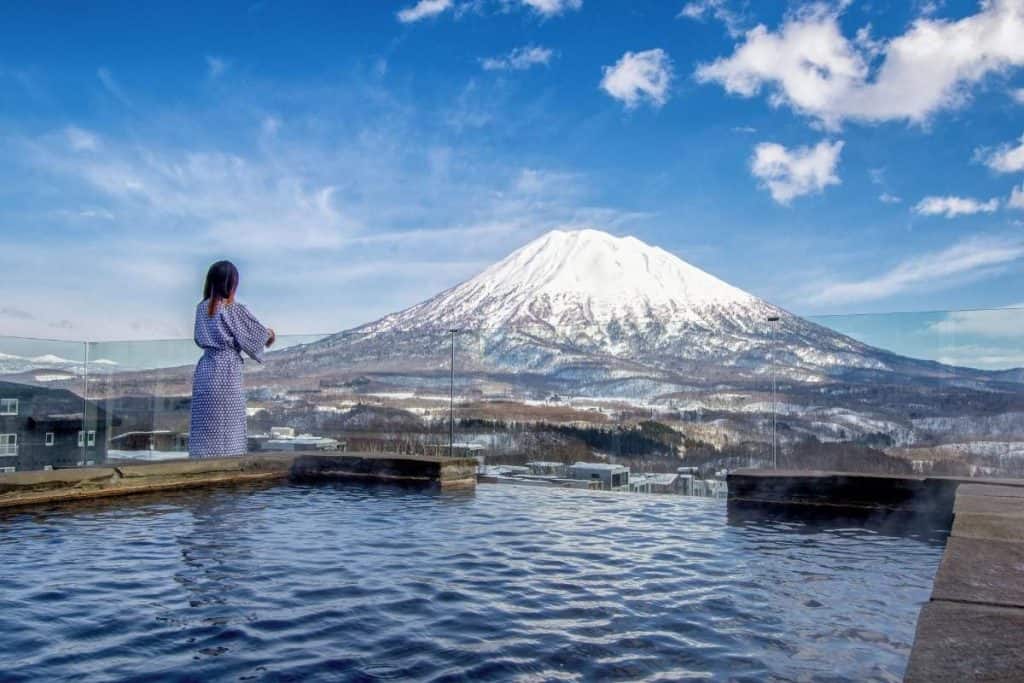
Discover Our Ultimate Collection of Travel Maps
Seasonal Food & Drink in Japan
Japan’s cuisine changes beautifully with the seasons, and tasting these specialties is one of the best ways to connect with local culture. Each season brings unique flavors, often tied to festivals and regional traditions.
Spring 🌸 – Celebrate cherry blossom season with sakura mochi (sweet rice cakes wrapped in pickled cherry leaves), hanami bento picnics under the blooms, and strawberry daifuku (mochi filled with fresh strawberries and sweet bean paste).
Summer ☀️ – Cool down with kakigori shaved ice topped with fruity syrups, savor refreshing cold soba noodles, and try unagi (grilled eel), believed to give stamina for the hot months.
Autumn 🍁 – Warm flavors arrive with matsutake mushrooms, kuri gohan (chestnut rice), and sweet persimmons, often sold in beautiful displays at local markets.
Winter ❄️ – Indulge in steaming nabe hot pot, comforting oden simmered with vegetables and fish cakes, and fragrant yuzu citrus in teas, baths, and desserts.
Practical Travel Tips for All Seasons
No matter when you visit Japan, a few smart tips can make your experience smoother, more enjoyable, and more connected to the local rhythm.
Getting Around Efficiently
Japan’s transportation network is world-class—fast, punctual, and remarkably clean—but it can feel overwhelming, especially during peak seasonal travel. Here’s how to make it seamless year-round:
🚄 Shinkansen (Bullet Trains) – Ideal for traveling between major regions like Tokyo, Kyoto, and Osaka. During spring cherry blossom season and autumn foliage, book seats in advance as demand spikes. Consider a Japan Rail Pass or regional rail passes from Klook or Trip.com, especially if visiting multiple cities within 7–14 days.
💳 IC Cards – Suica, Pasmo, and ICOCA make hopping on trains, subways, and buses effortless—and can even be used for vending machines and convenience store snacks. Families will love the convenience of tapping through gates without fumbling for change.
📱 Must-Have Apps –
- Google Maps for real-time routes.
- Japan Travel by NAVITIME for detailed transit schedules.
- Trip.com for booking seasonal transport passes and discounted tickets in English.
🌸 Seasonal Travel Tips –
- Spring & Autumn: Reserve train seats early, especially for routes to Kyoto and Nikko during peak bloom or foliage.
- Summer: Factor in festival crowds—arrive early to secure spots for fireworks or parades.
- Winter: Check weather forecasts for potential delays in northern regions like Hokkaido and Tohoku.
💡 Insider Tip: For scenic, stress-free travel, consider splitting your journey between Shinkansen rides and slower local trains for off-the-beaten-path stops.
Klook.comCurrency, Budgeting & Spending
Japan remains partially cash-based, especially in rural areas and small restaurants.
- Tip: Use the Wise app to exchange and manage your currency. It offers transparent rates and low fees, and is ideal for budgeting throughout your trip.
- Daily Budget Estimates:
- Budget Traveler: ¥6,000–10,000/day (~$40–70 USD)
- Mid-Range: ¥12,000–20,000/day (~$80–140 USD)
- Luxury: ¥30,000+/day (~$200+ USD)
Staying Connected
- eSIM Options: Stay online without hunting for Wi-Fi by using eSIMs from Airalo or Yesim—great for families needing connectivity across multiple devices.
- Wi-Fi Pockets: Still widely available to rent at major airports if you prefer a physical device.
Etiquette Reminders
- Shoes Off Indoors: Always remove your shoes before entering traditional inns (ryokan), temples, and many homes or guesthouses.
- Quiet on Trains: Keep phone calls and loud conversations to a minimum—Japan values public silence.
- Respect Photography Rules: Always ask before taking photos of people, and avoid filming in sacred or private places like temples or onsens.
🧭 Build a Season‑Smart Japan Itinerary (Free)
Spring blossoms, summer festivals, autumn foliage, or winter snow—tell us your dates, pace, and interests and get a day‑by‑day plan that fits your family or culture‑lover style. No spreadsheets. No stress.
- Custom routes that match your season (blossoms, foliage, ski, beaches)
- Kid‑friendly timing with breaks, stroller‑friendly stops & easy transit
- Smart logistics for JR/IC cards, attractions, and crowd‑aware timing
✨ Plan less, experience more — your personalized Japan trip starts here:
Memorable Mentions 🌟
Some experiences didn’t quite fit into a single season but are worth adding to your itinerary:
- Tottori Sand Dunes (Best in Summer): Japan’s mini desert near the Sea of Japan—ride camels, try sandboarding, or visit the Sand Museum.
- Ashikaga Flower Park (Spring): Stunning wisteria tunnels in full bloom during late April to early May.
- Kawaguchiko (Spring & Autumn): Mirror-like views of Mt. Fuji with cherry blossoms in spring and crimson maple leaves in autumn.
- Kinosaki Onsen (Winter): A charming hot spring town where visitors stroll between public baths in traditional yukata robes.
- Kanazawa (All Seasons): Rich in culture and history, this underrated gem shines with seasonal gardens, geisha districts, and authentic crafts.

Test Your Travel Smarts with Our Quizzes!
Think you know your way around the world? From cultural traditions to hidden gems, our short and playful travel quizzes are the perfect way to challenge yourself, learn something new, and maybe even spark your next adventure. Great for anyone who loves a bit of travel trivia fun!
Conclusion: Embrace the Seasons, Cherish the Moments
Japan isn’t a one-and-done destination—it’s a place that transforms with each season, inviting you to return again and again with a fresh perspective.
From cherry blossom picnics in spring to lantern-lit temples in autumn, sun-drenched beaches in summer to snow-covered villages in winter, every moment offers its own unique rhythm, beauty, and sense of discovery.
So whether you’re planning a family holiday full of fun and bonding, or chasing authentic cultural encounters that go beyond the guidebooks, let the seasons be your compass—and let us be your guide.
Plan Your Ultimate Japan Trip
FAQs About Seasonal Travel in Japan
Q: Which season is the best for first-time visitors to Japan?
A: It depends on your interests. Spring offers iconic cherry blossoms and mild weather, summer is vibrant with festivals and beach escapes, autumn brings breathtaking foliage and cooler temperatures, and winter offers snow sports and cozy onsen towns. Many first-timers choose spring or autumn for comfortable weather and photogenic scenery.
Q: How far in advance should I book accommodations for popular seasonal events?
A: For high-demand times like cherry blossom season (late March–early April), autumn foliage (November), and major festivals (e.g., Gion Matsuri in July), it’s best to book 4–6 months in advance. Use platforms like Booking.com or Expedia to secure your preferred location early.
Q: What’s the most family-friendly season to visit Japan?
A: Spring and autumn are the most comfortable for families—pleasant temperatures, fewer weather extremes, and plenty of outdoor activities. Summer can be great for beach destinations like Okinawa, but be mindful of heat and humidity. Winter works well for snow-loving families who enjoy skiing or winter festivals.
Q: Are JR Passes worth it for seasonal travel?
A: If you plan to travel between multiple cities or regions in one trip, especially during peak sightseeing seasons, JR Passes can save money and simplify travel. They’re especially useful for long-distance trips in spring and autumn when demand is high. You can compare prices and book via Klook or Trip.com.
Q: How much should I budget per day in Japan?
A: For most travelers: budget ¥6,000–10,000/day ($40–70 USD), mid-range ¥12,000–20,000/day ($80–140 USD), and luxury ¥30,000+/day (~$200+ USD). Seasonal events can increase prices for accommodations and transport, so plan accordingly. Apps like Wise help manage currency exchange and spending efficiently.
Q: Is it easy to find seasonal tours and activities in English?
A: Yes. Many major seasonal experiences—such as cherry blossom boat cruises, autumn foliage tours, or winter ski packages—are available with English-speaking guides. Platforms like Klook, GetYourGuide and Viator list tours with clear itineraries and reviews.
Q: What should I pack for Japan in different seasons?
A: Spring and autumn: light layers, a jacket for cool evenings, and comfortable walking shoes. Summer: breathable fabrics, sun protection, and a hat. Winter: thermal layers, gloves, and waterproof shoes, especially if visiting snowy areas.
📌 Love cultural travel? Explore more ideas on Pinterest →




